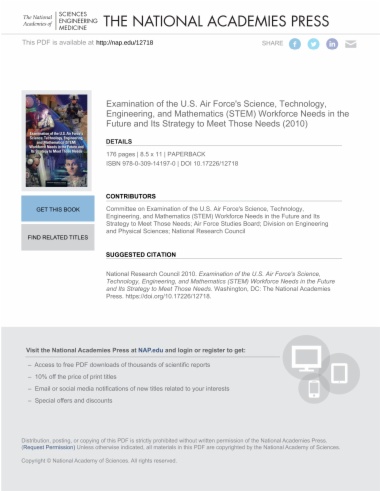

The Air Force requires technical skills and expertise across the entire range of activities and processes associated with the development, fielding, and employment of air, space, and cyber operational capabilities. The growing complexity of both traditional and emerging missions is placing new demands on education, training, career development, system acquisition, platform sustainment, and development of operational systems. While in the past the Air Force's technologically intensive mission has been highly attractive to individuals educated in science, technology, engineering, and mathematics (STEM) disciplines, force reductions, ongoing military operations, and budget pressures are creating new challenges for attracting and managing personnel with the needed technical skills. Assessments of recent development and acquisition process failures have identified a loss of technical competence within the Air Force (that is, in house or organic competence, as opposed to contractor support) as an underlying problem. These challenges come at a time of increased competition for technical graduates who are U.S. citizens, an aging industry and government workforce, and consolidations of the industrial base that supports military systems.
In response to a request from the Deputy Assistant Secretary of the Air Force for Science, Technology, and Engineering, the National Research Council conducted five fact-finding meetings at which senior Air Force commanders in the science and engineering, acquisition, test, operations, and logistics domains provided assessments of the adequacy of the current workforce in terms of quality and quantity.